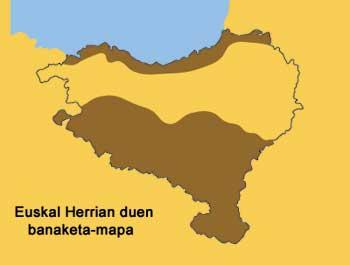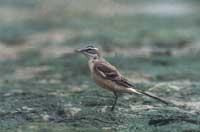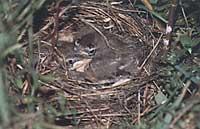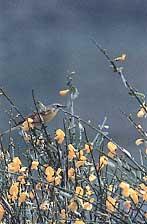Grass laundromat, slender insectivore

Probably born in large African meadows, and today a group scattered around the world is the family of the motazilids that form the chips and potters. All autochthonous species are insectivores of wide areas and are spread throughout all regions that can find suitable habitat, except in those where extreme weather conditions are limiting (such as Archaic and Antarctica).
Unlike txiras, potters are birds of striking plumage, especially wet pastures, which choose as residence the riparian areas of lakes and rivers. Many of them, on the other hand, winter in the tropical regions of Africa and Asia, approaching only in a time full to the temperate and Ipartino countries.

And that is precisely the case of the pasture pottery (Motacilla flava), a beautiful and slender bird that comes to us in late April or early weeks of May, where the txitos are launched into the world. The other two species of Euskal Herria, the white washerwoman (Motacilla alba) and the yellow washerwoman (Motacilla cinerea), live in it throughout the year.
As with the rest of the potters, experts have fixed numerous grassland subspecies, with the main criteria for this classification being the different models of plumage coloring.
Following this classification, the subspecies that reproduces in the Basque Country is the Motacilla flava iberiae. As for the colors of his plumage, in time of heat, the male presents a dark gray on the head and the nape, a white trail in the form of “eyebrow” on the eye and a paparo of the same color. The back and wings are brown and the belly intense yellow. The female is also very similar, but as in most birds, its colors are usually lower. And when the full season arrives, the female will take care of the incubation of the eggs, and during this work does not benefit anything the striking dress.

The reason that the male has a vivid and spectacular appearance is also related to the duties that he must fulfill in the full time. That is, the song of pottery is quite weak in itself and, therefore, when proclaiming ownership of the territory chosen to nest, clayey pastures use in addition to the acoustic message a visual message. And for that, yes! For this it is very bad to be with bright colors! In the same line, the habit of repeatedly shaking the tail indicating the name of these birds has been considered by some authors as a visual mechanism to predict the ownership of the territory.
Pasture pottery nests in the soil, so it uses root and dried herbs. Inside the nest accumulates wool and hairs to form a softer bed. The chitado of the 5 or 6 eggs that are put in it lasts for thirteen days, and as already said, it is the task of the female. At that time, the male has to deal with hunting in order to satisfy his and his partner's appetite. And that's where he goes up and down, running and moving his head and tail over and over again.
During the hunting exercise, he uses scrubland, trees, walls and stakes as a place of settlement and, if he sees his prey, embarks on an intense flight. And for that work, of course. Being insectivorous, it has a fine and sharp beak. And the long tail is also related to the hunting technique of the animal, because thanks to it and with the slogan, the pasture pottery has a great ability to catch and bend insects for free. We can often see it in grasslands, behind the cattle ranch, ready to catch mosquitoes, flies, spells and other flying insects that it raises from the earth.

With the protein-rich food brought by their parents, the kids will be able to leave the nest for twelve days and will soon have to face a tough bet. By mid-August, for the first time, they will have to embark on a long journey to Africa, which will bring them enormous energy demand. Pasture potters fly non-stop for two and a half days, and to cope with this work they need to bend their weight before leaving. Not all young people will be able to overcome the hard test. Not much less! But those who come across the Sahara will have the opportunity to enjoy a mild winter in tropical Africa, and when spring comes, with renewed forces, they will return to their countries of origin to create a new generation. However, less than half will reach the second breeding. In the case of pasture clay, and as in most passerines, the average survival of adult specimens is very short, which compensates with high fertility.
In the Basque Country, pasture pottery reproduces mainly in the southern and coastal regions, since in reality this species has no fondness for the mountains and, on the other hand, the extensive pastures and water margins that constitute its ideal habitat are the most abundant in these regions. Worldwide, on the other hand, it is a bird of very wide distribution, which as nesting is found practically throughout the northern hemisphere. It also reaches Alaska when the breeding season arrives, although autumn crosses the Bering Strait and meets with Asian partners to spend the winter to the south of the continent.
Technical information Species: Family Flava Motacilla: |
Buletina
Bidali zure helbide elektronikoa eta jaso asteroko buletina zure sarrera-ontzian











